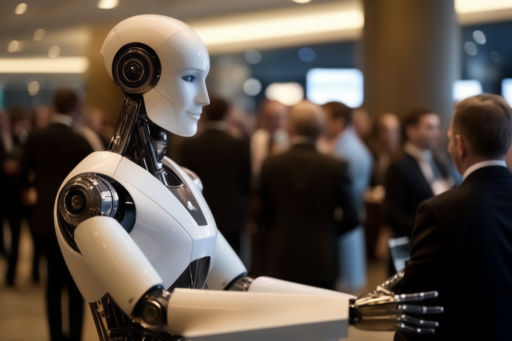I: Introduction to Neural Networks
Comparative Analysis of Perceptron and Multi-layer Perceptron for Binary ClassificationTo investigate the performance differences between single-layer and multilayer perceptrons for binary classification tasks. Analyze how additional layers impact the accuracy and generalization.
Design and Implementation of a Perceptron for Multiclass ClassificationDevelop a perceptron model for multiclass classification problems. The challenges and solutions in designing the architecture and selecting activation functions are explored.
Optimization Techniques for Training Perceptrons Various optimization algorithms, such as Stochastic Gradient Descent (SGD), Adam, and RMSprop, are used in the context of training perceptions. Evaluation of their impact on the convergence speed and model accuracy.
Impact of Hyperparameters on Neural Network Performance Conduct a study on the effects of different hyperparameters (learning rate, batch size, and number of layers) on the performance of the neural networks. A systematic approach was used to identify optimal settings.
Comparative Study of Activation Functions in Neural NetworksPerformance of different activation functions (ReLU, Sigmoid, and Tanh) in neural networks. Discuss their advantages and disadvantages in various scenarios.
The Role of Bias in Neural Networks: A Deep Dive The impact of bias on the training and performance of neural networks was investigated. Discuss how biases influence a model’s learning capacity and decision boundaries.
Neural Network Simplifications: Assumptions and Implications The common assumptions made in neural network models (e.g., linear separability and independence of input features) and their implications on model performance and generalization.
Building a Robust Neural Network for Image Recognition Design and implement a neural network for image-recognition tasks. Various strategies have been explored to enhance robustness against noise and distortions in the input data.
Parameter Initialization in Neural Networks: Techniques and Best Practices Study different parameter initialization techniques (random, Xavier, and He) and their impact on the training stability and convergence.
Exploring the Biological Inspirations Behind Neural Networks Research parallels between artificial neural networks and the human brain. Discuss how biological principles inspire network architectures and learning algorithms.
II: Applying Neural Networks
Information Flow Analysis in Deep Neural Networks Investigate the flow of information between layers in deep neural networks. We analyze how different architectures and layer configurations affect information propagation.
Dimensionality Reduction Techniques for High-Dimensional Image Data Explore various dimensionality reduction techniques (PCA and t-SNE) and their applications in preprocessing high-dimensional image data for neural network training. Weight Matrix Representations and Their Impact on Neural Network Performance Different representations of weight matrices in neural networks are analyzed. Discuss the computational efficiency and effect on model accuracy.
Understanding Feedforward Algorithms in Neural Networks Develop a comprehensive explanation of the feedforward process in neural networks. Mathematical notations and vectorized implementations were used for clarity.
Vectorized Implementation of Neural Networks: A Performance Analysis The computational efficiency and scalability of vectorized and non-vectorized implementations of neural networks are compared.
Image Recognition Using Deep Learning: A Comparative Study of Methods Conduct a comparative study of different deep learning methods (CNNs and RNNs) for image recognition. Analysis of strengths and weaknesses of various application scenarios.
Designing Neural Networks for Image Classification: A Comprehensive Guide Develop a step-by-step guide for designing and implementing neural networks for image classification tasks, focusing on architectural choices, preprocessing, and evaluation. Data Augmentation Techniques for Enhancing Neural Network Performance We explore various data augmentation techniques (rotation, flipping, and cropping) and their impact on improving neural network performance and generalization.
Evaluating the Role of Biases in Neural Networks Study the function and importance of biases in neural networks. Discuss how biases help shift decision boundaries and improve the model accuracy.
Exploring the Impact of Different Activation Functions on Network Learning We analyze how different activation functions influence the learning dynamics and performance of neural networks.
III: Training Neural Networks
Exploring the Landscape of Loss Functions in Neural Networks Various loss functions (cross-entropy and mean squared error) have been used in neural networks. Discuss their suitability for different types of problems and data distributions.
Gradient Descent Variants for Optimizing Neural Networks Explore different variants of gradient descent (mini-batch, stochastic, and batch) and their impact on training efficiency and convergence.
Backpropagation in Neural Networks: A Detailed Exploration A detailed explanation of the backpropagation algorithm is provided, including mathematical derivations and practical implementation tips.
Batch Normalization: Theory and Practice in Neural Networks Study the concept of batch normalization and its effects on neural-network training. Discuss how it helps stabilize learning and accelerate convergence.
Exploring the Role of Regularization in Neural Networks Investigate different regularization techniques (L1, L2, dropout) and their impact on preventing overfitting and improving the model generalization.
Optimizing Neural Network Training with Learning Rate Schedulers Explore various learning rate schedulers (step decay and exponential decay) and their impact on optimizing neural network training.
Early Stopping as a Strategy for Preventing Overfitting in Neural Networks Investigate the concept of early stopping and its effectiveness in preventing overfitting during neural network training.
Understanding the Impact of Batch Size on Neural Network Training We analyze how different batch sizes influence the training dynamics, convergence, and generalization of neural networks.
Exploring the Trade-offs Between Training Time and Model Accuracy Conduct a study on the trade-offs between training time and model accuracy. Explore how different factors (network depth and data size) influence this relationship.
Implementing Efficient Data Pipelines for Neural Network Training Develop efficient data pipelines for preprocessing and feeding data into neural networks. Discuss strategies for handling large datasets and optimizing the data throughput.
IV: Introduction to Convolutional Neural Networks (CNNs)
Exploring the Architecture of Convolutional Neural Networks Study the architecture of CNNs, including convolutional, pooling, and fully connected layers. Discuss their roles and interactions.
Applications of CNNs in Real-World Image Recognition Explore various real-world applications of CNNs in image recognition, including medical imaging, facial recognition, and autonomous driving.
Understanding the Visual System of Mammals and Its Inspiration for CNNs Investigate the biological visual systems of mammals and how they inspire the design of CNNs. Discuss similarities and differences.
Reading and Processing Digital Images for CNN Training Develop techniques for reading and preprocessing digital images to train CNNs. Discuss strategies for handling different image formats and resolutions.
Exploring the Concepts of Stride and Padding in Convolutions Study the concepts of stride and padding in convolutional layers. Analysis of their impact on feature extraction and computational efficiency.
Building a Simple CNN for Image Classification Implementation of a simple CNN for image classification tasks. Explore different architectures and training strategies to optimize performance.
Analyzing the Effectiveness of Different Pooling Strategies in CNNs We investigate different pooling strategies (max pooling and average pooling) and their impact on feature extraction and model performance.
Implementing CNNs for Video Analysis and Classification Explore the application of CNNs in video analysis and classification. Discuss techniques for handling temporal information and extracting meaningful features.
Feature Map Visualization in CNNs: Techniques and Applications Develop techniques for visualizing feature maps in CNNs. These visualizations were used to gain insights into the learning process and decision-making of the network.
A Comprehensive Guide to Building CNNs in Keras Provide a comprehensive guide for building CNNs using the Keras library. Topics such as architecture design, training, and evaluation were covered.
V: Applying Convolutional Neural Networks
Case Study: Building a CNN for the MNIST Dataset Conduct a case study on building and training a CNN for the MNIST handwritten digit dataset. Discuss the challenges and solutions for achieving high accuracy.
Implementing the VGG16 Architecture for Image Classification Implementation of VGG16 architecture for image classification tasks. analyzed its performance on different datasets and explored possible modifications.
CIFAR-10 Classification with Custom CNN Architectures Develop custom CNN architectures for the CIFAR-10 dataset. We compare their performance with standard architectures and explore optimization techniques.
Evaluating the Performance of CNNs with Different Feature Maps The effect of different numbers and sizes of feature maps on the performance of CNNs was investigated. Analyze how these choices impact the model accuracy and computational requirements.
Exploring the Use of Transfer Learning in CNNs Study the concept of transfer learning in CNNs. Explore how pre-trained models can be fine-tuned for specific tasks and datasets.
Pooling Strategies in CNNs: A Comparative Analysis Conduct a comparative analysis of different pooling strategies in the CNNs. Discuss their advantages and disadvantages in various contexts.
Building a CNN for Object Detection Tasks Develop a CNN for object detection tasks. Explore techniques for handling bounding boxes, multiple classes, and varying object sizes.
Implementing a CNN for Medical Image Classification Implementation of CNN for medical image classification tasks. Discuss the challenges and ethical considerations in handling medical data.
Optimizing CNNs for Real-Time Image Processing Explore strategies for optimizing CNNs for real-time image-processing tasks. Discuss techniques for reducing computational load and latency.
Customizing CNN Architectures for Specific Image Recognition Tasks Customized CNN architectures are designed and implemented for specific image recognition tasks. The impact of architectural choices on performance and generalization is analyzed.
VI: Recurrent Neural Networks (RNNs)
Exploring the Architecture of Recurrent Neural Networks Study the architecture of RNNs, including the input, hidden, and output layers. Discuss how RNNs process sequential data.
Applications of RNNs in Time Series Analysis Exploring the application of RNNs in time-series analysis. Discuss how RNNs can be used for forecasting, anomaly detection, and pattern recognition.Understanding the Concepts of Vanishing and Exploding Gradients in RNNs Investigate the issues of vanishing and exploding gradients in RNNs. Explore techniques for mitigating these problems and stabilizing training.
Implementing Long Short-Term Memory Networks (LSTMs) for Sequence Prediction Implementation of LSTMs for sequence prediction tasks. The unique features of LSTM cells and their advantages over standard RNNs were discussed.
Training Bidirectional RNNs for Improved Sequence Modeling Development and training of bidirectional RNNs for sequence-modeling tasks. Explore how processing sequences in both the forward and backward directions improves performance.
Exploring the Gated Recurrent Unit (GRU) Architecture Study the architecture of GRUs and their differences from LSTMs. Analysis of their performance in various sequence prediction tasks.
Handling Sequential Data with RNNs: Best Practices Develop best practices for handling sequential data with RNNs. Discuss strategies for preprocessing, data augmentation, and model evaluation.
Comparative Analysis of RNN Variants: RNN, LSTM, and GRU A comparative analysis of different RNN variants (RNN, LSTM, and GRU) was conducted. Exploring the strengths and weaknesses of different application scenarios.
Building an RNN for Natural Language Processing Tasks Implement an RNN for natural language processing tasks, such as sentiment analysis or text generation. Discuss challenges and solutions in handling textual data.
Exploring the Use of Attention Mechanisms in RNNs Study the concept of attention mechanisms in RNNs. Explore how attention improves the performance of RNNs in tasks that require long-range dependencies.

Mr. Ved Prakash Chaubey emphasized the critical role of understanding neural network architectures and components, including Perceptrons, CNNs, and RNNs, to effectively tackle diverse machine learning tasks such as image and sequence recognition.
He highlighted the importance of mastering various optimization techniques, activation functions, and regularization methods to improve the performance and generalization of neural networks in practical applications.
Mr. Ved stressed the necessity of implementing advanced neural network models, such as LSTMs and GRUs, to address challenges such as vanishing gradients and to enhance capabilities in tasks requiring long-term dependencies, such as natural language processing and time series analysis.
These topics cover a broad spectrum of neural network concepts, applications, and challenges, and provide ample opportunities for research and practical implementation.





